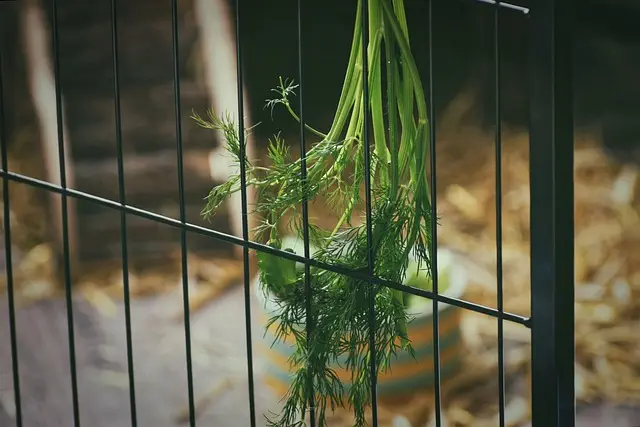Green Maeng Da and Red Bali are two distinct strains of Kratom, each offering unique effects due to their different alkaloid compositions and origins. Green Maeng Da, primarily from Thailand, is known for its energizing and mood-enhancing qualities, providing a balance between stimulation and focus without intense sedation, making it ideal for daytime use. Its high levels of 7-hydroxymitragynine give it a potent but non-anxious boost. On the other hand, Red Bali from Indonesia is renowned for its powerful analgesic effects and relaxation properties, which are beneficial for those seeking stress relief and pain management, particularly before bed. Users often choose between these two based on their specific needs, with Green Maeng Da favored for its invigorating effects and Red Bali for its tranquilizing benefits. Both strains have a significant presence in the Kratom market and are used by consumers to tailor their wellness experience. It's important to use these strains responsibly, considering individual differences in dosage and physiology, and adhering to relevant laws and regulations regarding Kratom consumption. Green Maeng Da vs Red Bali is a key comparison within the realm of Kratom effects, with each strain providing distinct experiences for users.
Thai Kratom Powder, specifically Green Maeng Da and Red Bali varieties, has garnered significant attention for its diverse effects and potential wellness benefits. This article delves into the nuanced differences between these two potent strains, offering a comprehensive analysis that sheds light on their distinct alchemical impacts. From the vibrant fields of Thailand where they are cultivated to the varying effects they elicit, this exploration of Green Maeng Da vs Red Bali will guide readers through the intricate tapestry of Kratom’s composition and consumption, ensuring a balanced understanding of each strain’s unique offerings. Join us as we unravel the mysteries behind these powerful botanicals and their impact on well-being.
- Unraveling the Potency of Green Maeng Da and Red Bali Kratom Powders: A Comparative Analysis
- The Alchemy of Effects: How Green Maeng Da Kratom Energizes and Red Bali Kratom Soothes
- Harvesting Harmony: Understanding the Differences in Cultivation, Composition, and Consumption Between Green Maeng Da and Red Bali Kratom Powders
Unraveling the Potency of Green Maeng Da and Red Bali Kratom Powders: A Comparative Analysis

Green Maeng Da and Red Bali Kratom powders are two distinct strains within the Mitragyna speciosa species, each renowned for its unique alkaloid profile and effects. Green Maeng Da, originating from the forests of Thailand, is celebrated for its balance of stimulating and sedating properties. It is often preferred by individuals seeking a robust and invigorating experience without the heavy sedation typically associated with some Kratom strains. The alkaloids present in Green Maeng Da are thought to interact synergistically, offering users a blend of energy, focus, and mood enhancement. This strain’s potency is often discussed in terms of its ability to promote alertness and mental clarity, making it a popular choice for those who require sustained attention throughout the day.
In contrast, Red Bali Kratom powder is derived from the islands of Bali in Indonesia and is recognized for its calming and analgesic effects. Its leaves are harvested when mature, dried under the sun, and ground into a fine powder. This process contributes to the strain’s high alkaloid content, which is reflected in its potency. Red Bali is commonly used by individuals seeking relief from stress and chronic pain or those looking to induce a sense of relaxation and well-being. The effects are generally more sedating than stimulating, providing users with a soothing experience that can aid in achieving restful sleep. When comparing Green Maeng Da vs Red Bali, users will notice the former’s energetic and motivating properties versus the latter’s tranquilizing and pain-relieving qualities. Both strains hold their own in the Kratom market, each with a dedicated user base, but the choice between them often comes down to individual preference and desired effects.
The Alchemy of Effects: How Green Maeng Da Kratom Energizes and Red Bali Kratom Soothes

Green Maeng Da Kratom is renowned for its invigorating and energizing effects, often attributed to its higher alkaloid content, particularly mitragynine and 7-hydroxymitragynine. This strain of Kratom is a favorite among users seeking a stimulating experience without the jittery side effects associated with traditional caffeinated beverages. Its unique ability to promote mental clarity and physical energy stems from the specific growing conditions and alchemical processes it undergoes, setting it apart from other strains like Red Bali Kratom.
In stark contrast, Red Bali Kratom is celebrated for its soothing and relaxing properties, making it a preferred choice among those looking to unwind or manage stress. The effects of this strain are often described as calming and euphoric, with users reporting relief from pain and an improved sense of well-being. The alkaloid profile in Red Bali Kratom, which includes 7-hydroxymitragynine along with other unique compounds, contributes to its distinctive mood-enhancing and sedative qualities. When comparing Green Maeng Da vs Red Bali, it’s clear that while they share some alkaloids, the different strains yield vastly different effects due to their distinct cultivation and processing methods. Users often explore both strains to find a balance that suits their individual wellness goals, with Green Maeng Da energizing and Red Bali Kratom soothing, each in its own right.
Harvesting Harmony: Understanding the Differences in Cultivation, Composition, and Consumption Between Green Maeng Da and Red Bali Kratom Powders

When exploring the realm of Kratom, two strains that often capture the attention of consumers are Green Maeng Da and Red Bali. While both are derived from the Mitragyna speciosa tree, their cultivation, composition, and consumer experience diverge significantly. The cultivation of Green Maeng Da takes place primarily in Thailand, where the climate and soil conditions favor its distinct alkaloid profile. This strain is celebrated for its energizing effects, attributed to its higher alkaloid content, particularly 7-hydroxymitragynine, which can provide a balance of stimulation and mood enhancement. On the other hand, Red Bali Kratom powder is named for its origin from the Indonesian island of Bali and is cultivated under different conditions, which influence its alkaloid makeup, typically resulting in higher levels of mitragynine, offering more sedating effects that are conducive to relaxation and pain relief. Users often report that Green Maeng Da is more invigorating, while Red Bali is favored for its soothing properties. The differences in these strains’ effects are a testament to the nuanced impact of cultivation on the chemical composition of Kratom, making ‘Green Maeng Da vs Red Bali’ a significant comparison within the Kratom community. When considering Green Maeng Da vs Red Bali, it is essential to understand that individual experiences can vary, and factors such as dosage, body chemistry, and tolerance play crucial roles in the perceived effects of each strain. Users are encouraged to approach these strains with an understanding of their unique characteristics and to consume them responsibly, adhering to local laws and regulations regarding Kratom use.
In conclusion, the nuanced differences between Green Maeng Da and Red Bala kratom powders are significant, with each offering unique effects that cater to diverse user needs. The comparative analysis of their potency highlights the energetic properties of Green Maeng Da, making it a preferred choice for those seeking a stimulating experience. Conversely, Red Bali’s soothing and relaxing effects have made it a staple for individuals looking to unwind or manage stress. Understanding the cultivation methods and alchemy of effects associated with these strains provides insight into their distinct compositions and how they interact with the body. For those considering Green Maeng Da vs Red Bali, it is clear that both have their merits, and the choice between them should be informed by personal wellness goals and desired outcomes.






